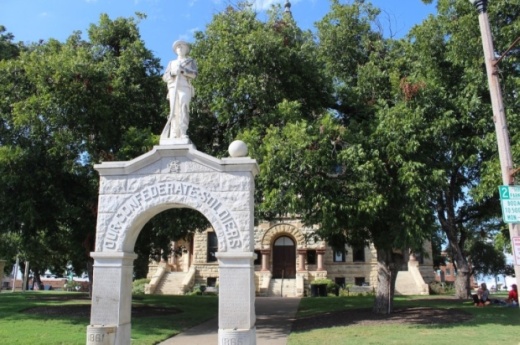“Although the Confederate Statue relocation and contextual additions have taken time, it’s been well worth it,” said John Baines, member of the Denton County Courthouse-on-the-Square Art Committee, in a news release. “The committee has worked together to come up with what we think is the best thing for Denton County and the memorial.”
The Denton County Commissioners Court approved a resolution June 9, 2020, executing a State Antiquities Code Permit Application to remove and relocate the monument. Eight days later, the permit application was resubmitted to address the committee members’ specification regarding the monument’s reinstallation.
Specifications included a description of the history of slavery in America and its causal impact on the Civil War as well as a description of the African American experience as that experience related to the legacy of the Civil War at the time of the memorial’s construction in 1918.
“We realized that probably inside our museum was the best location so we could provide the interpretation and historical context that we all wanted to tell, both THC and Denton County,” Denton County Judge Andy Eads said. “We came up with a good location within the courthouse museum and prepared the plan, which not only has elements of the monument, but it also has photographs and historical context and explanations and more background on it than just the granite structure.”
The exhibit will be surrounded on three sides by a 3-D version of the Confederate monument where it was once located on the courthouse lawn. The show will include a narrative explaining the history of the memorial and the history of slavery locally and statewide.
The debate over the county's Confederate memorial reached a climax in 2019 following years of discussion regarding its fate as the national conversation turned its eyes to other such monuments across the country. Some argue the monuments should be preserved, while others decry them as monuments to slavery.
“We believed bringing the statue indoors was the best stewardship we had for a statue we’ve had for 100 years on our lawn so we can preserve it for future generations to admire and learn from,” Eads said.
Last June, Denton County had the monument removed and relocated by a professional fine art moving company to climate-controlled storage owned by the county, where it has stayed since.





